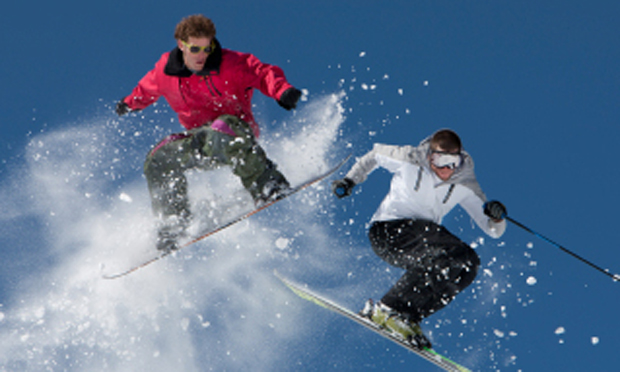For many residents in northern regions and high country, winter means more than suffering through tough weather conditions and hours spent shoveling snow — it means a chance to hit the slopes. Some 10 million Americans do so in an average year. However, according to a 2010 article in the Journal of the American Medical Association, skiing and snowboarding result in an estimated 600,000 injuries a year; of these, between 15-20% are traumatic brain injuries.
Such injuries may account for 50% to 88% of total deaths among skiers and snowboarders, according to a study in the Journal of Trauma. Champion freeskier Sarah Burke suffered fatal injuries in January 2012 on the same Utah training run where snowboarder Kevin Pearce suffered a traumatic brain injury in December 2009. Those events shocked the winter and extreme sports communities and prompted criticisms that such sports had grown too dangerous. Professional athletes typically wear helmets on the slopes, but research suggests that they are worn by less than 37% of the recreational participants. To what extent does a helmet protect the wearer from serious head and neck trauma?
A 2012 metastudy published in the Journal of Trauma and Acute Care Surgery, “An Evidence-Based Review: Efficacy of Safety Helmets in the Reduction of Head Injuries in Recreational Skiers and Snowboarders,” investigated how well helmets protected these recreational winter sports enthusiasts from serious injury. The researchers, from the Johns Hopkins School of Medicine and other medical institutions, analyzed 16 studies on incidents of ski and snowboard trauma — including head, neck or spine injuries and fatalities — helmet use, and risk-taking behavior published between January 1980 and April 2011.
Key study findings include:
- “The use of safety helmets clearly decreases the risk and severity of head injuries as compared with nonhelmeted participants in skiing and snowboarding…. Therefore, helmets are strongly recommended during recreational skiing and snowboarding.”
- Earlier research on helmet safety proposed the “risk compensation theory,” which suggests that safety precautions are counterbalanced by riskier behaviors, but the overall evidence does not support the theory. Researchers found no evidence linking helmet use and nonhelmet equipment damage, faster self-reported speed on the slopes, participation on a more difficult run, and jumping maneuvers.
- One study suggested that executing a jumping maneuver on the slopes was associated with a greater risk of serious head injuries than not wearing a helmet; another study suggested that riding on icy slopes and not wearing a helmet were the leading risk factors.
- One study showed that a greater number of nonhelmeted children suffered from skull and craniofacial fractures.
- In one study, more than two-thirds of participants classified themselves as “cautious” on the slopes, but they were no more likely to wear a helmet or ski/snowboard at lower speeds than their risk-taking peers.
- Skiers and snowboarders who believed that helmet use would decrease their chances of a severe injury or that helmet use should be mandatory were more likely to wear one.
The authors conclude that the “beneficial effects of helmets are not negated by unintended risks because their use does not seem to increase the risk of neck or cervical spine injury as compared with nonhelmeted participants in skiing and snowboarding.”
Tags: metastudy, sports, youth


Expert Commentary